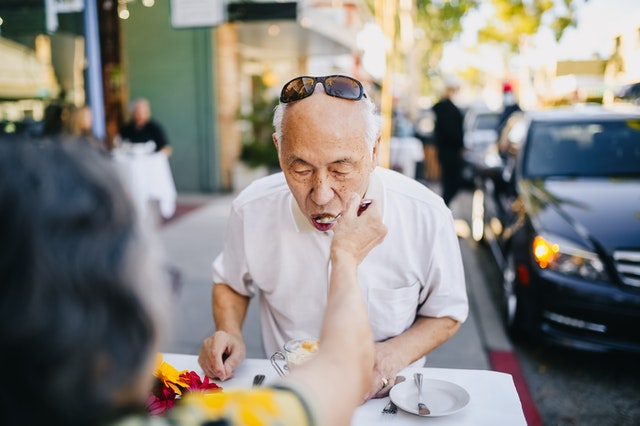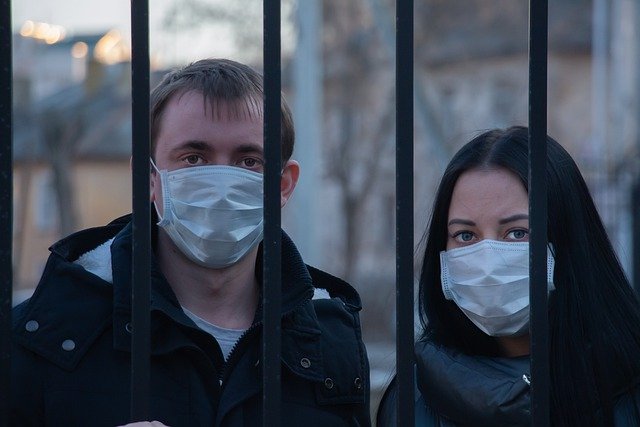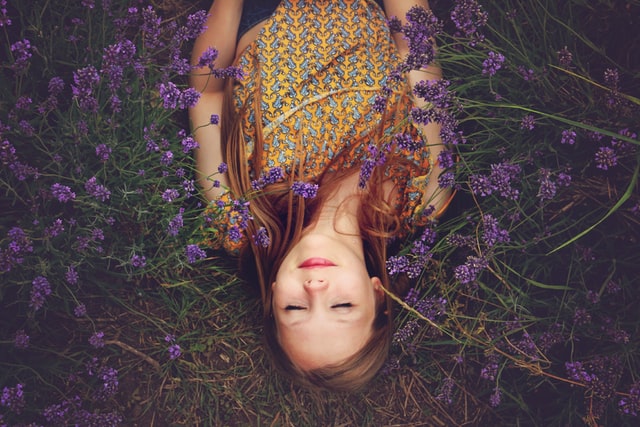BY MARCI ROBIN
Oct 8, 2020
Anyone who has started going gray knows it doesn’t happen overnight. You don’t suddenly wake up with silver strands as if someone painted them while you slept; it starts with a pigment-deprived hair or two while some of your hair still grows in full color. And when more of your hair starts growing gray, you may start to notice a demarcation line in larger sections of your hair where the color stopped and the gray started.

Dr. Aral four months after her initial color treatment. by MARCI ROBIN – Courtesy
Going gray is a process, but realizing it’s happening can feel very sudden. You may know immediately that you want to cover it with dye, or you may consider embracing the gray. In the case of our Birnur Aral, Ph.D., Director of the Good Housekeeping Institute’s Health, Beauty and Environmental Sciences Lab, she did a little bit of both.
“I had an unrelated allergic reaction that made my lips swell up for a few weeks, so I skipped my monthly hair color visit in order to give my body a break,” explains Aral, who had been coloring her hair since her late 20s to cover up grays. “My roots grew about an inch, and I started noticing the salt-and-pepper pattern of my natural hair and toying with the idea of going gray.”
Ultimately, Aral decided to go fully gray, and her experience both personally and professionally — this scientist has tested a whole lot of hair dye in her 11 years at the GH Institute! — can serve as a guide for you if you’re ready to make the switch.
Here’s what you need to know:
1. A “color correction” can save you from growing it out.
“Letting the roots grow would have been the cheapest solution but not the most stylish,” Aral says. “Some people let the roots grow for an inch or two and then just get a pixie cut and transition that way. I wasn’t ready for a drastic change of color and cut at the same time.”
Instead, she opted for consultation with colorist Anne Marie Barros of Rubann in New York City. You have the option of essentially getting a “color correction,” but instead of correcting it your natural or dyed color, your colorists correct it to be more like the gray shade growing in.
2. The transition process is a lot like getting highlights.
“To match the salt-and-pepper look of my roots, the colorist put in baby highlights all over my head,” Aral says, noting that the foils stayed on much longer than she had personally experienced while coloring her hair in the past. “Toward the end of the lifting process, the colorist applied dark brown hair color to the remaining hair to create an all-over salt-and-pepper effect. When the foils were taken out and my hair was rinsed, a toner was applied to turn the highlights into a cool gray and silver.”
Depending on the color you’re transitioning away from, your experience may be different. And even if you’re rarin’ to go, you may have to wait a while before you even begin the process.
“I tell people to get at least two inches of growth to begin with,” says Nikki Ferrara, colorist at New York’s Serge Normant at John Frieda. “Then I start to highlight.”
3. It can take a while — and get expensive.
If you’ve never lightened your hair before, you could find yourself in the salon for an unexpected length of time during the coloring process.
“I spent a total of seven hours in the salon and really saw how intensive the process was to justify the price tag,” Aral explains. That price tag? About $500. That, of course, can vary with your starting color, your hair length, the salon you go to and the level of experience your colorist has.
The initial highlighting session isn’t the only thing that can take a while. It can take anywhere from six months to a year to fully go from color to gray, Ferrara says. But there are simpler, less expensive ways to transition to gray.
4. Some upkeep is required before your color is fully grown out.
As with going platinum or any cooler blonde shade, you may find that the gray “highlights” get a little brassy. “The highlighted parts turn a bit yellow once the gray toner starts washing out,” Aral said.
Your colorist may also recommend coming in for more toner or glosses during the course of your transition. “Usually, you will have to gloss every once in a while to keep the brassiness at bay,” Ferrara says.
To help keep warm yellow tones at bay with less frequent salon visits, consider using a purple-toned shampoo like Clairol Shimmer Lights. This balances out brassiness and keeps your gray a gorgeous silver shade.
5. It’s an adjustment — but worth it.
Just like with any new hair color, you may find that how you normally do your makeup and hair or your wardrobe may not be as flattering as you once thought.
“I feel with gray hair I need to have my hair styled — blown out or ironed — and makeup on; otherwise I look older than my usual self,” Aral said. “I also feel like certain patterns and colors don’t look good on me anymore. White, grey and black looks good but haven’t figured the right bright colors yet.”
“Most people won’t have the patience, so they choose to color their hair again,” Ferrara says. “But it’s super-rewarding if you can stick it out and get on a routine with your colorist to get highlights every few months.”
If you decide to go the cheaper route and just grow out your grays without additional processing at the salon, Aral recommends covering up the new growth with a root touch up, like this Seal holder from Clairol.
“Depending on the person’s gray level and hair color, they might be able to blend in [their] roots for five to six weeks, or longer.” From there, Aral recommends considering a shorter haircut (think a pixie), and getting regular trims until it grows out. Keep in mind, though, that any at-home color that’s not temporary will set back your growing out phase.










